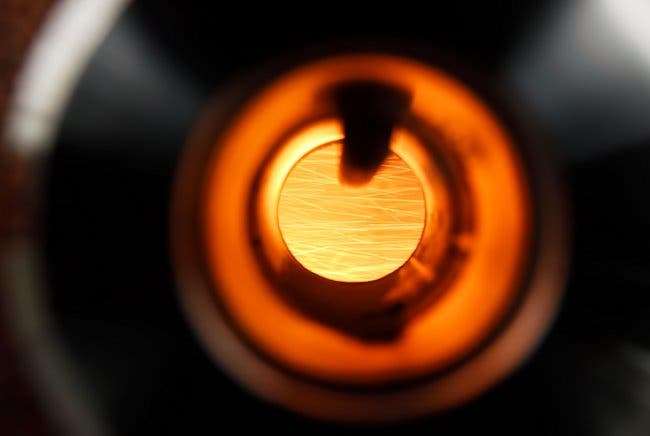A brewery in the Netherlands has become the first business in the world to use iron powder as fuel on an industrial scale.

We tend to think of fire mostly as something that engulfs wood, coal, petrol, and other flammables. It’s practical to do so — those are the things we burn when we need something to burn. But from a chemical point of view, almost everything burns, given the right conditions — including iron.
The Swinkels Family Brewers in the Netherlands has become the first business to use iron as a fuel for industrial application. It worked together with the Metal Power Consortium and researchers at TU Eindhoven to install a cyclical iron fuel system (more on that shortly) at its Brewery Bavaria, which is able to heat up around 15 million glasses of beer a year.
Iron burn
“We are enormously proud to be the first company to test this new fuel on an industrial scale in order to help accelerate the energy transition,” said Peer Swinkels, CEO of Royal Swinkels Family Brewers. “As a family business, we invest in a sustainable and circular economy because we think in terms of generations, not years.”
“We combine this way of thinking with high-quality knowledge in the collaboration with the Metal Power Consortium. Through this innovative technology, we want to make our brewing process less dependent on fossil fuels. We will continue to invest in this innovation.”
Industries typically rely on fossil fuels for all their heat-intensive needs, since these hold a whole lot of energy in a very dense package. Finely-ground iron can serve the same purpose, however. In such a form and at high temperatures, iron burns easily.
Burning is the physical manifestation of a chemical reaction known as oxidation, and we perceive the energy given off by this reaction as light and heat. When iron is burned this way, there is no output of carbon dioxide (since there’s no carbon in iron). The only product is rust. The best part is that this rust, which is basically just iron oxide, can then be turned back into plain iron with the simple application of an electrical current.
In essence, if you use energy from solar, wind, or other clean sources, you can use iron filings as a sort of clean battery that charges with electricity and outputs heat — which is neat!
Other advantages of this system include how cheap and abundant iron is, how easy it is to transport (it doesn’t need to be cooled like hydrogen, for example), its high energy density, and the high temperatures it can output (up to 1,800 °C / 3,272 °F). It also doesn’t spoil and won’t lose its properties even if stored for a long time.
The cyclical iron system installed at Brewery Bavaria handles both the burning and recharging phases of the process. Depending on how energy is fed back into the used iron, it can store up to 80% of the energy input back into the iron fuel, which is comparable to the efficiencies of modern hydrogen-splitting techniques.
“While we’re proud of this huge milestone, we also look at the future,” says Chan Botter, who leads student team SOLID at TU Eindhoven, a group dedicated to the advancement of metal fuels.
“There’s already a follow-up project which aims to realize a 1-MW system in which we also work on the technical improvement of the system. We’re also making plans for a 10-MW system that should be ready in 2024. Our ambition is to convert the first coal-fired power plants into sustainable iron fuel plants by 2030.”
The system Botter talks about would have a theoretical efficiency of around 40%, which isn’t great, but it could prove to be a convenient and flexible way of storing energy, either for later use or for transport to another site. An advantage of this approach would be that our current energy-generation infrastructure can be adapted to use iron quite easily (as all that is changed is the type of fuel used).
It’s not yet clear if it would be economically-viable, but it’s definitely a very exciting idea — at least, I think it is. There’s also something very cool about the idea of burning iron for power.
Here’s a video detailing how the technology would work from TU Eindhoven:









